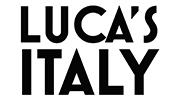 Scroll down for a list of posts about Umbria on this blog.
Scroll down for a list of posts about Umbria on this blog.
Origins
Landlocked at the geographical centre of Italy is Umbria. It is cut in two by the wide valley of the river Tiber which rises on Mt Fumaiolo at the point where Umbria and its northern neighbours Tuscany, Emilia Romagna and Marche meet. It takes its turn to host the appenines on its eastern side, while its western side holds the great lake of Trasimeno, the fourth largest but most shallow lake in Italy. The name of the region derives from the ancient tribe of the Umbri, but the territory was assimilated by the Etruscans who founded most of the large towns in the region. The capital, Perugia, which still boasts Etruscan walls and an original city gate was one of the twelve cities of Etruria. After the Roman period the area became absorbed into the Papal State where it remained for most of its history until unification in the nineteenth century.
Umbria today
Modern Umbria remains mostly agricultural being a centre for tobacco production as well as wheat, emmer (known locally as farro), olive oil and grapes. Its proximity and geo-cultural similarity to Tuscany has lead to it becoming an overflow destination for tourists, both domestic and international. A large number of rural buildings and farms are now involved in the agriturismo movement which allows owners to supplement their farming income with bed and breakfast customers.
There is a small amount of industry in Umbria which includes the famous Perugina chocolate factory in Perugia. Now, part of Nestle, the company still manufactures its traditional range of chocolates in the area, the most famous of which is Baci or ‘kisses’, hazlenuts encased in chocolate packaged with a piece of paper containing your romantic fortune. So connected has Perugia become with chocolate that it is the host of Eurochocolate, an international chocolate festival, every October.
Umbria is also a centre of pilgrimage due to the presence of Assisi, the home and final resting place of St Francis, Italy’s favourite and patron saint. He has left his mark on the regional culture, not least in the tradition of living cribs which spring up in the area just before Christmas, employing local people, babies, and animals into the spectacle. Many towns such as Gubbio, which the saint liberated from a savage wolf, also have a Franciscan connection. The icon for this region features the basilica of St Francis in Assisi.
Food and wine
Umbria and Tuscany are virtually indistinguishable from each other when it comes to food, with truffles, mushrooms, and wild boar providing much of the interest for both regions. Gallina ubriaca (drunk hen) is a sort of local variant on coq au vin and there are many lentil dishes employing another local crop.
Wine is an important local product, with red wine being centred around the city of Montefalco and white around the picturesque town of Orvieto. Sagrantino di Montefalco, is a high quality red, on a par with the super Tuscan wines over the border. The region also produces passito a local variant on vin santo as a sweet dessert wine. Torgiano, which hosts a wine museum, also produces excellent reds and white wines. As regular readers of this blog will know, Umbrian wine is currently undergoing a bit of a renaissance with some really interesting Umbrian wines being made from traditional grape varietals.
Recipes and posts
